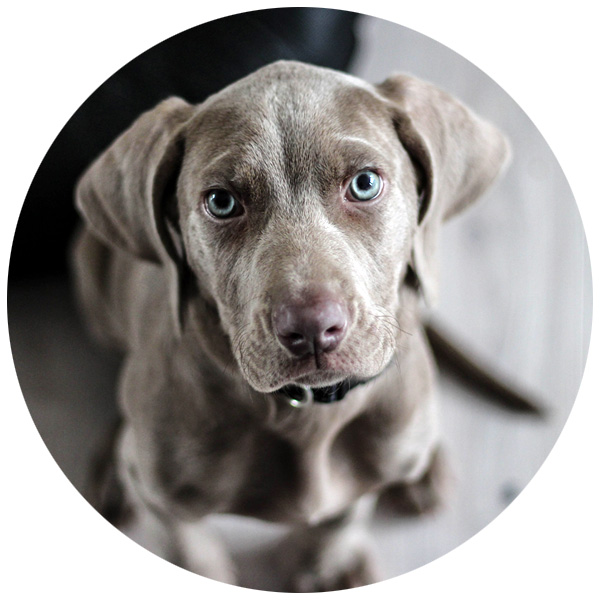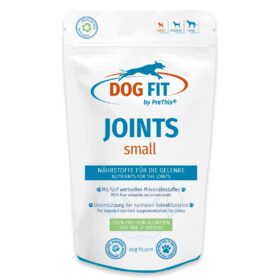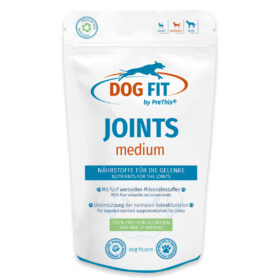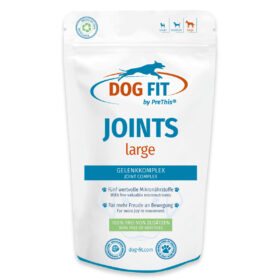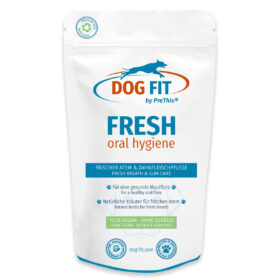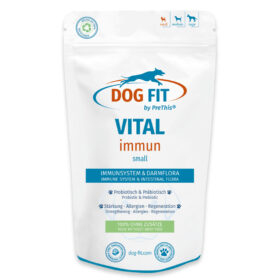Arthrosis – the wear and tear of joints in dogs
What is arthrosis and how does it manifest itself?
Arthrosis is the most common joint disease in dogs. The term osteoarthritis or arthrosis (synonym arthrosis deformans, from ancient Greek arthron for joint and Latin “deformare” for to mutilate) refers to a degenerative joint disease caused by wear and tear of joint and cartilage tissue, also known as excessive joint wear.
Although arthrosis is often considered a typical sign of ageing in dogs, it can actually occur in dogs of all ages. This is due to the fact that joint wear can be caused not only by the natural ageing process, but also by many other factors. In general, the symptoms of osteoarthritis depend on the degree of wear and can range from moderate to severe joint pain and stiffness. These symptoms can significantly limit the mobility and enjoyment of life of the affected dog.
The causes of osteoarthritis in dogs
The cartilage recession (cartilage atrophy)
As dogs get older, the cartilage mass and synovial fluid in the joints often decrease, which means that they are no longer adequately protected from stress. The cartilage in the joints, together with the synovial fluid, ensures that the joint bones can move smoothly. It also provides a kind of buffer that protects the joint components during pressure loads. Articular cartilage can be damaged by wear and tear, injury, improper stress, malnutrition, obesity or infection. Most often, a decrease in cartilage over time leads to wear and tear of the individual joint components, inflammation and finally to arthrosis.
Joint dysplasia
Joint dysplasia can also cause dogs to develop osteoarthritis. Joint dysplasia is a congenital or time-developed misalignment of the joints that often occurs in the hip area – hip joint dysplasia. Due to the permanent misalignment of the joints, the joint cartilages are constantly subjected to considerable additional stress due to the greater compression of the cartilage tissue. Although cartilage is very flexible and this flexibility is important for its important protective function for the joints of dogs, it can be strongly compressed due to joint dysplasia and cannot withstand this additional load in the long term. The result of this extra load is often a decline of the cartilage and eventually arthrosis.
Non-species-specific nutrition is also a factor
Finally, inadequate nutrition must also be mentioned as a very common trigger for osteoarthritis in dogs. A poor quality or inadequate diet can cause canine articular cartilage to have a reduced concentration of important joint nutrients that provide stability, flexibility and maintenance of cartilage and sufficient production of synovial fluid. The result of such a nutrient deficiency in cartilage tissue is a decline in cartilage and eventually osteoarthritis. Unfortunately, ready-made food does not always offer sufficient quality and is often enriched with artificial additives. Especially when feeding dry food, many diseases can be observed.
Overweight in dogs
Excess weight in dogs, due to a poor diet and/or lack of exercise, can also lead to osteoarthritis as extra weight is placed on the dog’s joints. This extra stress can lead to wear and tear on the joint cartilage, which in turn can lead to joint pain, stiffness and restrictions in the dog’s mobility. It is important that dogs maintain a healthy weight to protect their joints and prevent potential health problems. A species-appropriate diet and regular exercise can help keep the dog’s weight in the healthy range and prevent the development of osteoarthritis.
The arthrosis prognosis
Unfortunately, once damage to joint cartilage has occurred, it cannot be completely reversed. However, by taking joint nutrients, the cartilage can regenerate to a certain extent and more joint fluid is produced. Therefore, the treatment of osteoarthritis mainly aims to prevent further damage and relieve pain. In this way, mobility can be maintained and the dog can follow its natural desire for exercise. This is one of the most important goals, exercise! Standing still is counterproductive in osteoarthritis, as movement promotes the formation of joint fluid.
Ultimately, the prognosis always depends on the stage of the arthrosis. The earlier one starts with prophylactic measures, the greater the chances of not contracting arthrosis. However, if a dog is already ill, the following measures must be taken quickly and consistently to prevent worse if possible:
- An adapted diet. Fresh, healthy and high quality. Avoid industrially produced wet and dry food. Dry food deprives the body, cartilage and intervertebral discs of additional fluid. Dogs do not usually drink enough to compensate for this fluid deficit.
- Get enough exercise, such as walking and swimming.
- Physiotherapy with a dog physiotherapist.
Supplementary Feed for Joint Function Support in Dogs
Natural ingredients such as glucosamine, MSM, collagen, green-lipped mussel, hyaluronic acid, calcium, devil’s claw, and frankincense can contribute to supporting joint function. To find out which products or combinations are suitable for your dog, we recommend consulting with our experts. We are happy to assist you with any questions you may have! You can find an overview of our joint products for dogs in the following category:
